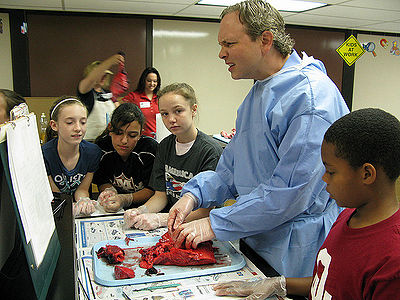
Every year, millions of animals are dissected in elementary, secondary, and college science classes. This constitutes not only animal lives lost but abuse and environmental havoc.
Animals earmarked for dissection are gassed and injected with formaldehyde. Sometimes they are still alive while being injected. Formaldehyde and other carcinogenic materials are used to preserve the dead animals. This is unhealthy for the teachers and students as well as for the environment in general. Some of the animals used in these dissections are caught in the wild and contribute to depleting the species in their natural habitat. Dissections are also damaging to the students’ respect for living things.
The most commonly dissected animals are frogs, but cats, mice, rats, worms, dogs, rabbits, fetal pigs, and fish are also used for dissection. These dissections provide students with demonstrations of known facts and are therefore not really necessary to the learning process. In fact, today’s technology allows for alternative methods of teaching about living systems, such as interactive videos and computer programs. Two databases which provide these types of materials are NORINA and the European Resource Centre for Alternatives in Education.
More than a dozen states in the U.S. have enacted laws giving students the right to refuse to participate in dissections. These laws apply to elementary and secondary school only. Some countries, including Argentina, India, and Israel, have banned dissection in schools. Countries like Italy allow students to choose not to participate.
The HSUS has created a Dissection Campaign Packet for elementary and high school age children to help them inform teachers, students and the public about the dissection issue.
External links:
- Animals in Education: Classroom Dissection
- Alternatives to animal experiments in education
- Dissection: Lessons in Cruelty



